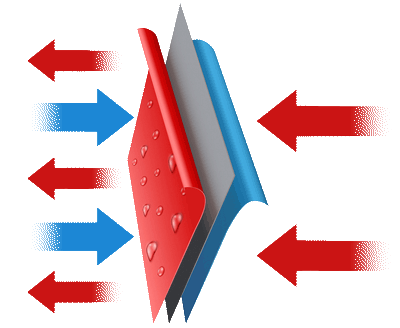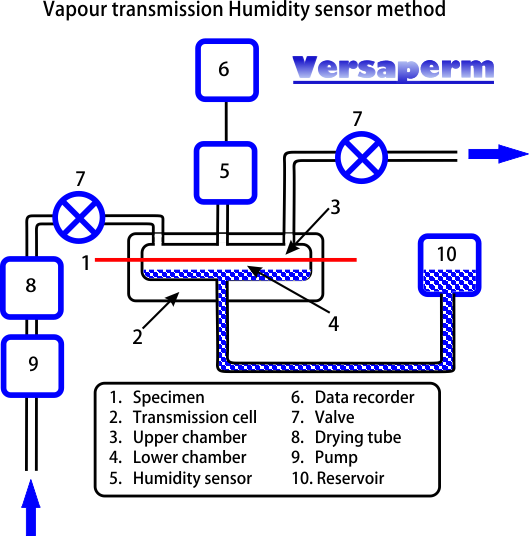

 DIN EN ISO 15106-1: Plastics – Film and sheeting,
determination the water vapour transmission rate,
DIN EN ISO 15106-1: Plastics – Film and sheeting,
determination the water vapour transmission rate,
Water Vapour Transmission Rate (WVTR), which is also known as moisture vapour transmission rate (MVTR), is the rate of a steady-state water vapour flow per unit time through a unit area of a body under specified temperature and partial pressure conditions. It is a measure of the permeability of a material and is widely expressed in many types of units (see Versaperm Conversion Units).
ISO 15106 is a standard test method for measuring the vapour permeability of a film or plastic sheeting. The method uses a dry chamber which is divided from a wet chamber by a sheet of the film or sheet under test. One side is saturated with water vapour at a known temperature, the water vapour permeates through the vapour and the resultant humidity created on the other side is measured by a humidity sensor. The time it takes for the humidity to increase by a given amount determines the water vapour transmission rate (WVTR), which is the inverse of the vapour permeability. The system operates at a specified relative humidity.
The WVTR is critically dependent on temperature and relative humidity ( partial pressure) and these must be stated-be recorded. Care must also be taken to ensure there are no wrinkles or slackness in the specimen/.

To calculate the water vapour transmission rate of each test specimen use the equation:

Where
WVTR is the water vapour transmission rate of the test specimen, expressed in grams per square metre 24 hours [g/(m2·24 h)]; S is the water vapour transmission rate of the reference specimen, in g/(m2·24 h);
T R is the time taken for the relative humidity to increase using the reference specimen
Ts is the time-taken for the relative humidity to increase-using the test specimen
AR is the transmission area of the reference specimen
Ar is the transmission area of the test specimen (using the same chamber AR and As are usually identical and this fraction is thus 1)